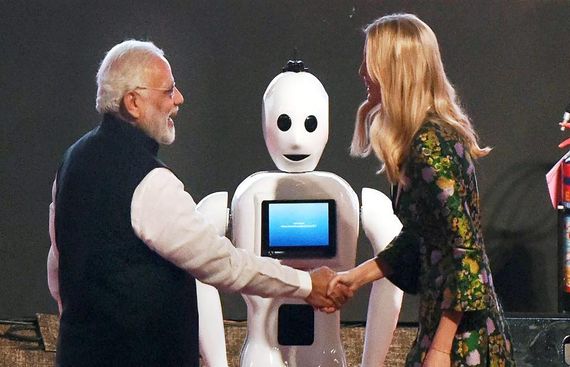How the Growth of Robotics Market in India Affect the Economy?

Being an interdisciplinary branch of artificial intelligence (AI), robotics engages different fields of electrical and mechanical engineering and computer science. Robots mean multifunctional, automatic and re-programmable industrial machines that are embedded with a variety of high-tech devices like visual, tactile and audio sensors. Designed to perform several tasks automatically with speed, intelligence and accuracy, robotics in the R&D field of robotics assists the development of versatile robots, which can perform various tasks in other industries like healthcare, defense, aerospace and automotive. The sudden development of this technology helped producers and service providers around the globe with the right amount of convenience, outputs, minimized human errors and improved quality and process automation.
In India, the robotics market is going through a phase of accelerated growth and as a result of the Make in India campaign, the robotics companies in the country are increasing at an astonishing rate. Surprisingly, India is now projected as the Big 3 in the robot race behind the US and China. India is now steadily pushing its way to the top flight with the innovations.
India is now expected to become the fourth largest automobile producer in the world by 2020 after China, US and Japan and it has registered a 14 percent CAGR growth. Factors such as robust demand, rising indigenization, and policies play a key role in the growth in the automotive sector and the adoption of robots is the prime force that made the success obvious.
Likewise, the gain in the electronics industry always paved the way for growth in the applications of robots in the industry. Experts claim that the market for electronics and home appliances is expected to reach $400 billion by 2020. Robotics can assist from cutting metal housings to assembling miniature, fragile components on boards and fro quality testing to the transportation of the finished goods, which help to accomplish tasks with great precision and speed.
Robots have become an imperative figure in the Indian operation theatres ever since Dr. Naresh Trehan conducted the nation’s first fully robotic heart surgery in 2002. Along with surgical interventions, medical robots in the country have also reached to the levels of medical transportation, prosthetics, sanitation and more. Indian surgical robotics domain is planning to expand at a CAGR of 20 percent between 2017 and 2025. However, different sectors in the world drive automation ahead and they hold a bright chance for the future. With partnerships with universities, they are now introducing a PG Diploma in Robotics.
Read More News :
Why Robotic Process Automation (RPA) Can be the Next Big Thing?
9-year-old Bangalore Boy Creates an App for Waste Management
